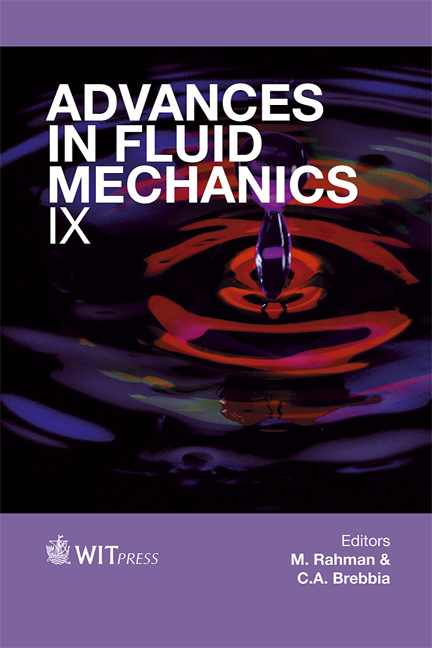On Gauge Fields In Fluid Turbulence
Price
Free (open access)
Transaction
Volume
74
Pages
12
Page Range
73 - 84
Published
2012
Size
309 kb
Paper DOI
10.2495/AFM120071
Copyright
WIT Press
Author(s)
T. H. Moulden
Abstract
A standard gauge velocity field is introduced into the constant density Navier– Stokes equations and extended to treat fluid turbulence. Some of the elementary properties of such gauge fields are explored and relationships between them established. In particular, the gauge fields separate out the irrotational motion from the vortical motion. An example that describes the inactive component of a turbulent flow is presented. Keywords: gauge fields, turbulence models, energy estimates. 1 Background Write the field equations for the flow of a constant density viscous fluid in the standard form: ∂vi ∂xi = 0; ∂vi ∂t + ∂ ∂xj (vivj) + ∂P ∂xi = ν ∂2vi ∂xj ∂xj + fi (1a, b) where P(x, t) is the pressure field normalized by the constant fluid density. Equations (1a,b) define the field (v, P) in which v(x, t) is the instantaneous velocity field at location x and time t. f(x) denotes a time independent body force in equation (1b). Herein, the kinematic viscosity coefficient, ν, is taken to be constant. To be useful these equations must possess a unique regular solution for meaningful boundary conditions; and the existence of such a solution is assumed in the following discussion. Certain additional assumptions must be made before equations (1a,b) can be adopted to describe the turbulent flow of a viscous fluid. These assumptions include the need for the turbulent velocity and pressure fluctuations to be continuous and have bounded energy. It is also required that all velocity-related correlation functions be bounded.As is standard, the divergence of equation (1b) produces a Poisson equation to compute the pressure field directly: ∂2P ∂xi ∂xi = ∂fi ∂xi − ∂2 ∂xi ∂xj (vivj) (1c)
Keywords
gauge fields, turbulence models, energy estimates.





